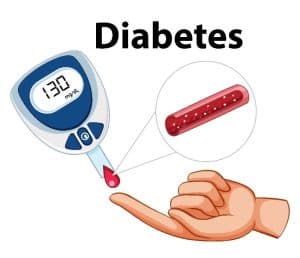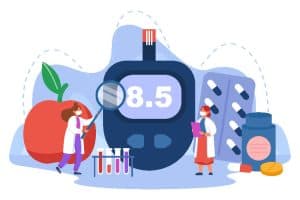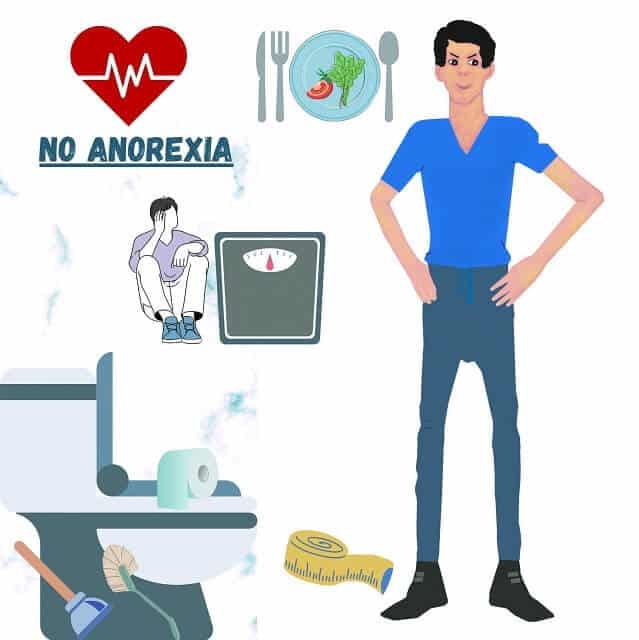T1DE – Type 1 Diabetes Eating Disorder
Recent increased awareness of Type 1 Diabetes Eating Disorder and barriers to treatment of T1DE

Commonly known or recognised eating disorders such as Anorexia or Bulimia can evolve from these root causes. However, the very recent Parliamentary Enquiry, launched in June 2022 and published on 23 January 2024, has highlighted the existence of Type 1 Diabetes eating disorder, known as T1DE. This condition also includes forms of Bulimia and Anorexia but has the added complication of an individual’s diagnosis of Type 1 Diabetes. They will therefore have been prescribed insulin which can lead to weight gain so they then restrict their insulin to lose weight leading to a significant additional health risk.
This condition is so new in terms of it being recognised that T1DE is not currently listed as a formal medical diagnosis. This is an area that the enquiry identified as being a barrier to effective care. Other blocks to care were identified as
- There not being an effective registry of people with Type 1 Diabetes in England and Wales thus preventing healthcare professionals from identifying, through sharing medical information, and treating T1DE at an early stage
- No clinically approved pathway to prevent or treat T1DE and disjointed systems are failing those who need help or support.
- A lack of comprehensive support information and health guidelines for either the person with T1DE or family members (so they can identify there is an issue and know what support to offer).
- Further research is needed by the NHS and other medical bodies to improve treatment at every stage of the condition.
What is an eating disorder?
Firstly, what is an eating disorder? An eating disorder is a mental health condition in which we use the control of food to cope with feelings and situations that we find it difficult to deal with, resulting in unhealthy eating behaviours. These unhealthy eating behaviours include:
- Restrictive eating
- Avoidance of certain foods
- Binge eating
- Purging by vomiting
- Laxative misuse
- Compulsive exercise.
These behaviours will continue in the same way as if the individual has a substance addiction: the person will continue with the daily behaviour even though it is having a detrimental effect on all of their life areas and their health has become a concern to family or friends. Research has found that approximately 70% of people with an eating disorder have also been diagnosed with an anxiety or mood disorder and the worst statistic is that people with an eating disorder have the highest mortality rate of any mental illness.
What are the main or common root causes of having an Eating Disorder?
- Bullying at school
- Social media
- Trauma
- A comment made by someone else about our putting on weight
- Athletic pressure
- Dysfunctional family dynamics
- Genetics
- Other mental health disorders
Risks of people with Type 1 Diabetes developing an eating disorder
People with Type 1 Diabetes face a higher risk of developing an eating disorder such as Bulimia or Anorexia due to the intrinsic connection between type 1 diabetes and food. People with type 1 diabetes often count carbohydrates, read food labels and have a detailed awareness of the types of food in their body. Type 1 Diabetes causes the body to mistakenly attack insulin producing cells in the Pancreas thus making particular food intake crucial in regulating glucose levels.
With Type 1 Diabetes there is the absolute need to closely monitor carbohydrate intake and pay daily attention to the response of the body to food intake. There is a further need to have a focus on body weight. Insulin must be administered daily to closely manage blood glucose levels. However, people with the condition termed T1DE will have started to restrict administering their insulin as a means of losing weight.
Without insulin your blood sugar levels build up very quickly. This is known as Hyperglycaemia which results in going to the toilet a lot and any calories passing straight through and out of the body via urine. Severe insulin restriction can also result in a condition called Diabetic Ketoacidosis, where the blood sugar levels will not come down and the body is forced to break down fat for energy. This can lead to hospitalisation being necessary as the body becomes dangerously acidic – which can be fatal.

Other side effects of stopping using insulin for long periods of time are damage to kidneys, loss of sight and damage to the nerves in your feet. These complications of diabetes may not previously have been linked to an eating disorder.
As previously stated, T1DE is not yet a recognised medical condition. Neither is Diabulimia which is a term penned by the UK media. While not a qualified medical term, urgent work is starting to be carried out in terms of understanding the condition. More importantly a care pathway is starting to be determined for stages of treatment. For many to finally have a name for the condition that they are battling can be a help and a sense that they are not on their own. Finally, following this Parliamentary Enquiry, there is a sense of relief that positive action is being taken.
It is suggested that at this time there needs to be more support for the individual with their Diabetes and separately with the eating condition. It may be that individuals are not being given enough time with a health care professional to get an initial and fuller understanding when they were first diagnosed as having the condition of diabetes and that lack of knowledge has led to the development of an eating disorder. It could just simply be the fear of a needle and hypoglycemia, when blood sugar drops too low, which may lead to some people with Type 1 Diabetes skipping their insulin doses on purpose or manipulating their blood sugar levels to try and avoid hypoglycemia. It may be that these issues have never been identified.
Similarities in symptoms of T1DE and other eating disorders
The similarities between T1DE and medically recognised eating disorders can be difficult to spot as a commonality is secretive behaviour, but things to look out for are: over exercising; restricting food intake; misuse of laxatives and diuretics; becoming secretive and lying, when challenged, about our behaviour; and continued evident weight loss.
The current treatment has to centre on two separate areas: firstly the maintaining of a healthy daily diet in conjunction with the diagnosed diabetes and responsible insulin levels; and secondly treatment around the aspects of the eating disorder in line with a healthy daily food intake. This treatment can more easily take place within the safe environment of a residential addictions unit which can assist with breaking the unhealthy cycle.
Ways of hiding an Eating Disorder
Food obviously plays the main role with all eating disorders and also with T1DE but, at The Haynes Clinic, we are noticing that, recently, more people coming into the clinic have been sharing with us the other ways that they have been hiding their eating disorder. For example, they may say that they have special dietary needs by suddenly becoming particular with how they eat such as claiming to be Vegan, Vegetarian or even Gluten free. Be aware that these special dietary ‘needs’ may also hide an eating disorder.


